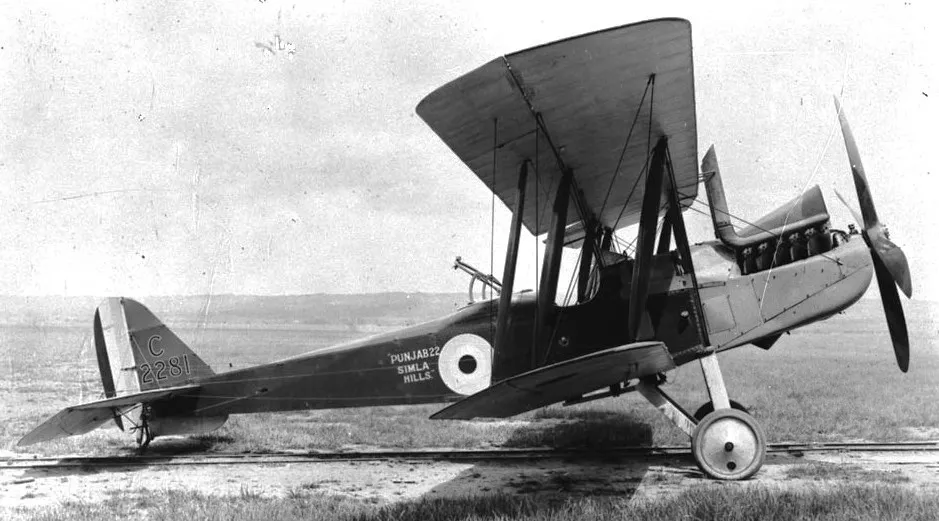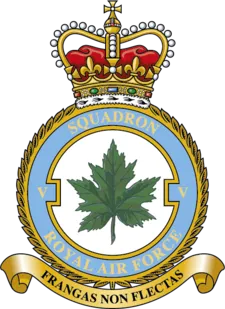Galbraith, Charles Franklin (Captain)
Killed in Action 1918-September-15
Service
RAF
Unit
5 (BR) Sqn- Squadron (RAF)
Frangas Non Flectas Thou mayest break but shall not bend me
Base
France
Rank
Captain
Position
Pilot
Service Numbers
Home
R.E.8 serial: C2789

Royal Aircraft Factory (Reconnaissance Experimental) R.E.8 (Serial No. C2281), "Punjab 22 Simla Hills", built by Daimler Company Ltd. Coventry, ca 1918
The Royal Aircraft Factory R.E.8 was a British two-seat biplane reconnaissance and bomber aircraft of the First World War designed and produced at the Royal Aircraft Factory. It was also built under contract by Austin Motors, Daimler, Standard Motors, Siddeley-Deasy and the Coventry Ordnance Works.
Intended as a replacement for the vulnerable B.E.2, the R.E.8 was widely regarded as more difficult to fly and gained a reputation in the Royal Flying Corps for being "unsafe" that was never entirely dispelled. Although eventually it gave reasonably satisfactory service, it was never an outstanding combat aircraft. Nonetheless, it remained the standard British reconnaissance and artillery observation aircraft from mid-1917 to the end of the war, serving alongside the rather more popular Armstrong Whitworth F.K.8.
More than 4,000 R.E.8s were eventually produced; these aircraft saw service in a range of different theatres, including Italy, Russia, Palestine and Mesopotamia, as well as the Western Front. The R.E.8 was rapidly withdrawn from service after the end of the conflict, by which time it was regarded as totally obsolete. Wikipedia
Unit Desciption
5 (BR) Sqn Frangas Non Flectas ( x)
History of the Squadron during WWII (Aircraft: Audax, Mohawk IV, Hurricane IIc, IId, Thunderbolt I & II)

The Maple leaf in the badge reflects the squadron's close association with the Canadian Corps during WWI.
At the outbreak of war in September 1939, No. 5 Squadron were based in the North-West Frontier of India at Fort Sandeman (now Zhob, Pakistan), equipped with the Westland Wapiti biplane. The squadron became a light bomber unit when it converted to the Hawker Hart in June 1940. It became a fighter unit, equipped with obsolete Hawker Audaxes, in February 1941. In December 1941, the squadron relocated to RAF Dum Dum, Calcutta, and began to receive their first monoplane – the American-built Curtiss Mohawk Mk.IV. After the outbreak of hostilities with Japan, the squadron moved to RAF Dinjan, Assam, in May 1942, and was tasked with escorting Bristol Blenheim bombers over north west Burma (now Myanmar). Its first operational fighter sortie was flown in July 1942. In January 1943, the squadron began flying RHUBARB operations, on targets on the Imphal and Chindwin rivers, and these became an important part of the squadron’s activities. In June 1943 while the squadron was based at RAF Kharagpur, the Mohawks were replaced by Hawker Hurricane Mk.IId’s for ground attack missions, although they did not use them on vehicles until the following January. Later the squadron converted to Hurricane IIc’s and returned to more normal bomber escort and interdiction duties. In June of 1944, the squadron re-equipped with North American Thunderbolts, returning to operations in December. Duties were a mixture of escorts to Dakotas dropping supplies, RHUBARBS and dive bombing with wing-mounted 500 lb (227 kg) bombs. The last operations were bombing in support of the invasion of Rangoon. At the end of the hostilities, the squadron returned to India where it converted to Tempests and was disbanded in August 1947.
Maps for Movements of No. 5 Squadron 1941-45

MAP 1 Bases used by 5 Sqn RAF 1941-45 (right-click on image to display enlarged in new tab)
|


